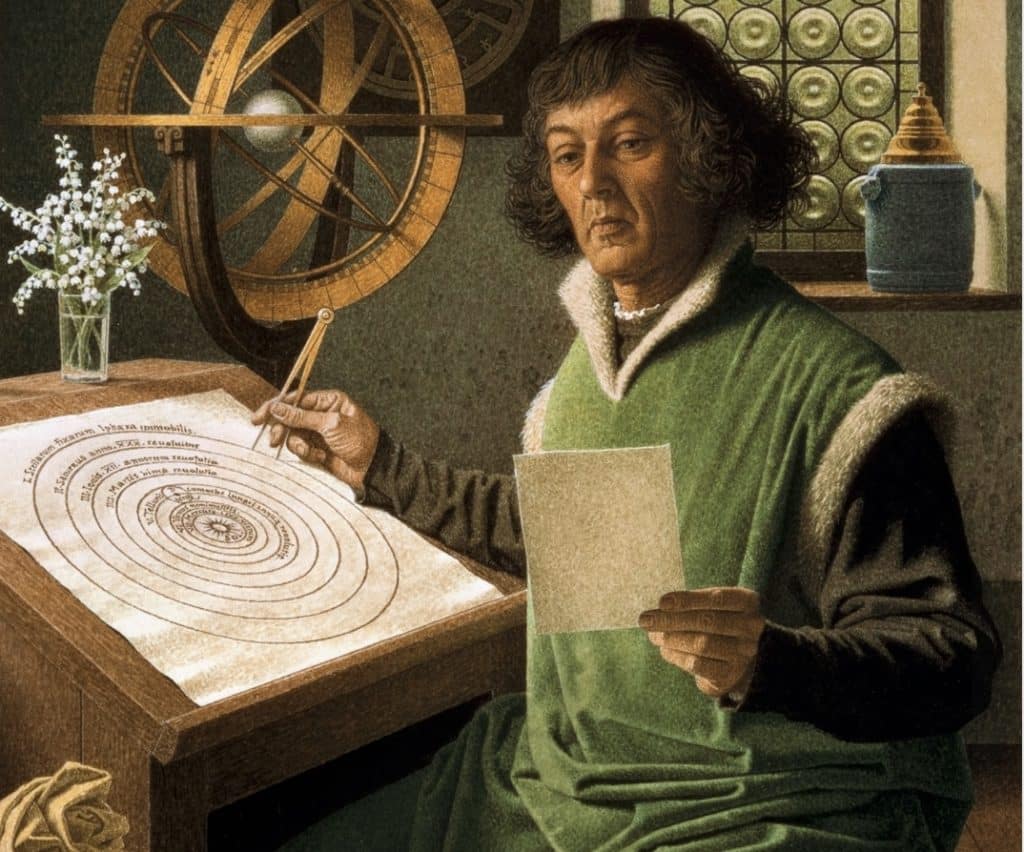
Nicolaus Copernicus was born on February 19, 1473 in Toruń, Poland. On October 19, 1496, he enrolled at the University of Bologna, where he studied Greek, mathematics and astronomy in addition to his official course in canon law. In the years that followed, he served as a canon, while also studying the heavens and observing the lunar eclipse of November 6, 1500. Around 1513 he distributed a little hand written book, to a few of his friends in which he shared his heliocentric view of the universe. Following the format of Euclidean geometry, he expressed the foundation of his theory as a set of 7 axioms:
1. There is no one centre in the universe.
2. The Earth’s centre is not the centre of the universe.
3. The centre of the universe is near the sun.
4. The distance from the Earth to the sun is imperceptible compared with the distance to the stars.
5. The rotation of the Earth accounts for the apparent daily rotation of the stars.
6. The apparent annual cycle of movements of the sun is caused by the Earth revolving round it.
7. The apparent retrograde motion of the planets is caused by the motion of the Earth from which one observes.
Possibly fearing persecution by the Church, he did not identify himself as author on the title page. It was not until three decades later, in 1543, that his landmark work, De Revolutionibus Orbium Coelestium (On the Revolutions of the Heavenly Spheres) was published– just before his death. It carried a dedication to Pope Paul III, as protection against a potential charge of heresy.
Emphasizing the importance of observation over blind belief, Copernicus asserted: Finally we shall place the Sun himself at the center of the Universe. All this is suggested by the systematic procession of events and the harmony of the whole Universe, if only we face the facts, as they say, ‘with both eyes open’.
